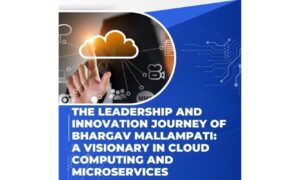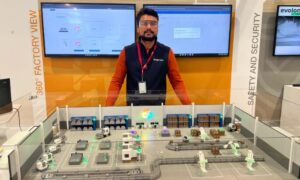Introduction
Cloud computing stands out as a transformative force, reshaping the digital landscape year after year. As we step into 2023, the narrative around cloud computing takes an exciting turn, with a focus shifting from the traditional cloud to the dynamic interplay between the Edge and the Cloud.
The Edge-Cloud Continuum
The meteoric rise of Edge computing has redefined the paradigms of cloud architecture. Unlike the conventional centralized cloud infrastructure, Edge computing brings processing power closer to the data source, reducing latency and enhancing real-time capabilities. This shift marks a departure from the one-size-fits-all model of cloud computing, offering a more decentralized and distributed approach.
As businesses grapple with the increasing demand for low-latency applications, the Edge-Cloud continuum emerges as a strategic solution. This hybrid approach leverages the strengths of both Edge and Cloud technologies, creating a seamless and efficient computing ecosystem. Organizations are now strategically placing computing resources at the edge to meet the demands of applications that require instantaneous responses.
Challenges on the Horizon
However, this transition is not without its challenges. The distributed nature of Edge computing introduces complexities in managing and securing a myriad of devices and endpoints. Security concerns, such as data breaches and unauthorized access, become more pronounced in this decentralized environment. Striking the right balance between the Edge and Cloud, ensuring data integrity, and mitigating security risks pose formidable challenges for enterprises embracing this paradigm shift.
Furthermore, interoperability becomes a key consideration as organizations seek to integrate Edge and Cloud technologies seamlessly. Standardization efforts are underway, aiming to establish a common framework that facilitates the harmonious coexistence of diverse Edge and Cloud components. As the industry grapples with these challenges, collaborative initiatives and technological advancements are paving the way for a more cohesive and interoperable Edge-Cloud ecosystem.
Emerging Technologies Shaping the Landscape
The convergence of Edge and Cloud computing opens the door to a host of emerging technologies that promise to redefine the digital experience. One such technology is 5G, which acts as a catalyst for the widespread adoption of Edge computing. The high-speed, low-latency connectivity offered by 5G networks empowers Edge devices to deliver real-time processing and analytics, unlocking new possibilities for applications in healthcare, manufacturing, and beyond.
Artificial Intelligence (AI) also plays a pivotal role in shaping the Edge-Cloud landscape. The ability to process and analyze data at the Edge, coupled with the immense computing power of the Cloud, empowers AI-driven applications to reach new heights. From intelligent edge devices enhancing automation to Cloud-based AI models crunching vast datasets, the synergy between Edge and Cloud amplifies the capabilities of AI, driving innovation across industries.
The Rise of Serverless Computing
Another noteworthy trend in the Cloud computing landscape is the rise of serverless computing. This paradigm shift eliminates the need for organizations to manage and maintain servers, allowing them to focus on code development and application functionality. Serverless architecture, often associated with Function as a Service (FaaS), enables developers to deploy code snippets in response to events, optimizing resource utilization and minimizing operational overhead.
Transcending Boundaries with Multi-Cloud Strategies
The integration of Edge computing into multi-cloud strategies offers a distributed approach to computing that aligns with the dynamic nature of modern business operations. By leveraging the strengths of different cloud providers and incorporating Edge capabilities, organizations can tailor their infrastructure to meet specific performance, compliance, and latency requirements.
Conclusion
As we traverse the evolving landscape of cloud computing in 2023, the convergence of Edge and Cloud technologies takes center stage. This dynamic interplay brings forth a new era of possibilities, with the Edge-Cloud continuum offering unprecedented efficiency, speed, and scalability. However, this journey is not without its challenges, from security concerns to the imperative need for interoperability.



































